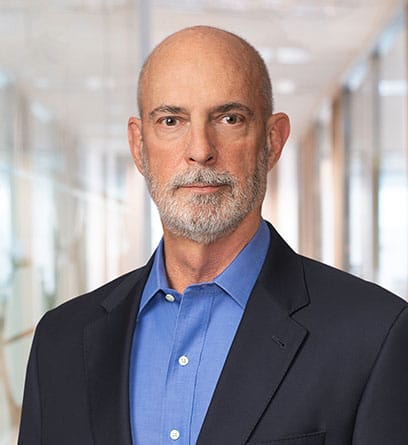A fertilizer plant surrounded by homes, schools, and a hospital. A chemical tank that was externally examined but not drained of liquid for a more thorough inspection. These were some of the factors that contributed to two recent environmental disasters that affected thousands of Americans and, in one case, caused 15 deaths and more than 200 injuries.
At a recent presentation at Thompson Coburn’s St. Louis office, Johnnie Banks, the lead federal investigator of the U.S. Chemical Safety and Hazard Investigation Board’s Washington, D.C., office, talked about the agency’s work investigating both the West, Texas, fertilizer plant explosion and the Charleston, W.V., chemical spill that tainted the water supply for 300,000 people.
Banks gave the presentation* to the EHS Leaders’ Network, a group of leading environmental, health and safety professionals from companies and institutions from across the Midwest.
The U.S. Chemical Safety Board is an independent federal agency that investigates major chemical accidents, conducts safety studies, and issues recommendations to stakeholders, including the EPA and OSHA.
“We don’t have an enforcement function,” Banks said. “We’re tasked with finding the root causes of an incident. When we put up our tents on a site, we typically start asking, ‘Why, why, why,’ and drill down.
“It’s not just because a worker didn’t pull a switch, for example. Was it a training issue? A personnel issue? We dig deeper and go beyond human error.”
West, Texas, fertilizer plant explosion
On April 17, 2013, flames appeared at warehouse of the West Fertilizer Company in the small farming community of West, Texas. About 20 minutes later, a massive explosion occurred, killing 15 people, the majority of them emergency responders. Another 236 people were injured.
“It was a gut punch for the entire township,” Banks said. “The infrastructure of the town was damaged. These people were hurting and still struggle with post-traumatic effects.”
The CSB’s photos of the blast area show the demolished warehouse and the extensive damage caused to 150 nearby homes. In one photo of a playground near the plant, a steel basketball hoop is violently bent in half.
At the time of the explosion, the fertilizer plant held an estimated 50-60 tons of ammonium nitrate, most of it stored in highly combustible wood bins, Banks said. “Ammonium nitrate is not classified as an explosive, but there is a history of incidents,” he said. “It’s pretty unpredictable when it starts to burn.”
Even before the West, Texas, incident, the CSB had urged both OSHA and EPA to include such reactive chemicals as part of their safety and risk management regulations.
Another issue in the West, Texas, explosion was the city’s lack of a fire code or any requirements for a company like West Fertilizer to provide information to local firefighters about the quantity and location of ammonium nitrate on the site. These problems were compounded by the largely volunteer firefighting force that responded to the explosion and the absence of any standardized training for such volunteers.
But perhaps one of the most troubling factors in the catastrophe was the stunning proximity of homes, schools, an apartment building, and a nursing home.
“People ask, ‘How does a fertilizer plant end up in the middle of a community?’” Banks said. “Well, the plant was there first and developers built right up to the fence line. Folks viewed the ammonium nitrate plant as the mother’s milk of what they did. They wanted to live close to where they worked.”
Banks said the CSB is looking at land use and zoning issues in the area and may make recommendations about the proximity of residential and commercial properties to similar facilities.
Charleston, W.V., chemical spill
A pair of two-centimeter holes in a massive 48,000-gallon steel tank — that was the start of a chemical spill that resulted in the shutdown of the Charleston, W.V., water supply for 10 days, affecting more than 300,000 people.
The CSB is in possession of the shard of the steel tank containing the holes. The tank itself is of WWII vintage, Banks said, more than 50 years old. On Jan. 9, 2014, it was discovered that the tank leaked approximately 10,000 gallons of 4-Methylcyclohexane methanol (MCHM) with an estimated 5.6% Propylene glycol phenyl ether (PPH) into the adjacent Elk River. Less than two miles downstream from the Freedom Industries site was the West Virginia American Water intake facility, which services the state’s most populous area.
Tank 396 and its contents were affected by several regulatory gaps, Banks said. For one, MCHM is not considered hazardous by the EPA and therefore not regulated by the federal Spill Prevention Control and Counter Measure Program. Second, there are no mandatory standards for how to design or maintain non-petroleum tanks. The tank passed an API-653 inspection in October 2013 but wasn’t drained for an internal inspection that may have revealed the holes.
“We recommend going one tank at a time and emptying that tank, but it’s always harder to sell those extra preventative methods before something happens,” Banks said.
Banks said the CSB will examine the design of tank 396, including its wall thickness and materials of construction. He said the agency will also look at the adequacy of information on MCHM and PPH that appears on material safety data sheets (MSDS).
Said Banks, “It’s a huge challenge to say you want to take on the world of MSDS and make it stronger, but Charleston is a glaring example of why that would be worthwhile.”
*Bank’s presentation was for general informational purpose only and was not intended to be an expression of the formal adopted views of the U.S. Chemical Safety and Hazard Investigation Board until the final report has been voted on and approved by the board. The final report will include recommendations aimed at preventing recurrence not only at the Freedom site, but at other facilities as well.
Peter Strassner is co-chair of Thompson Coburn’s Environmental group. Peter can be reached at pstrassner@thompsoncoburn.com or 314 552 6109.

